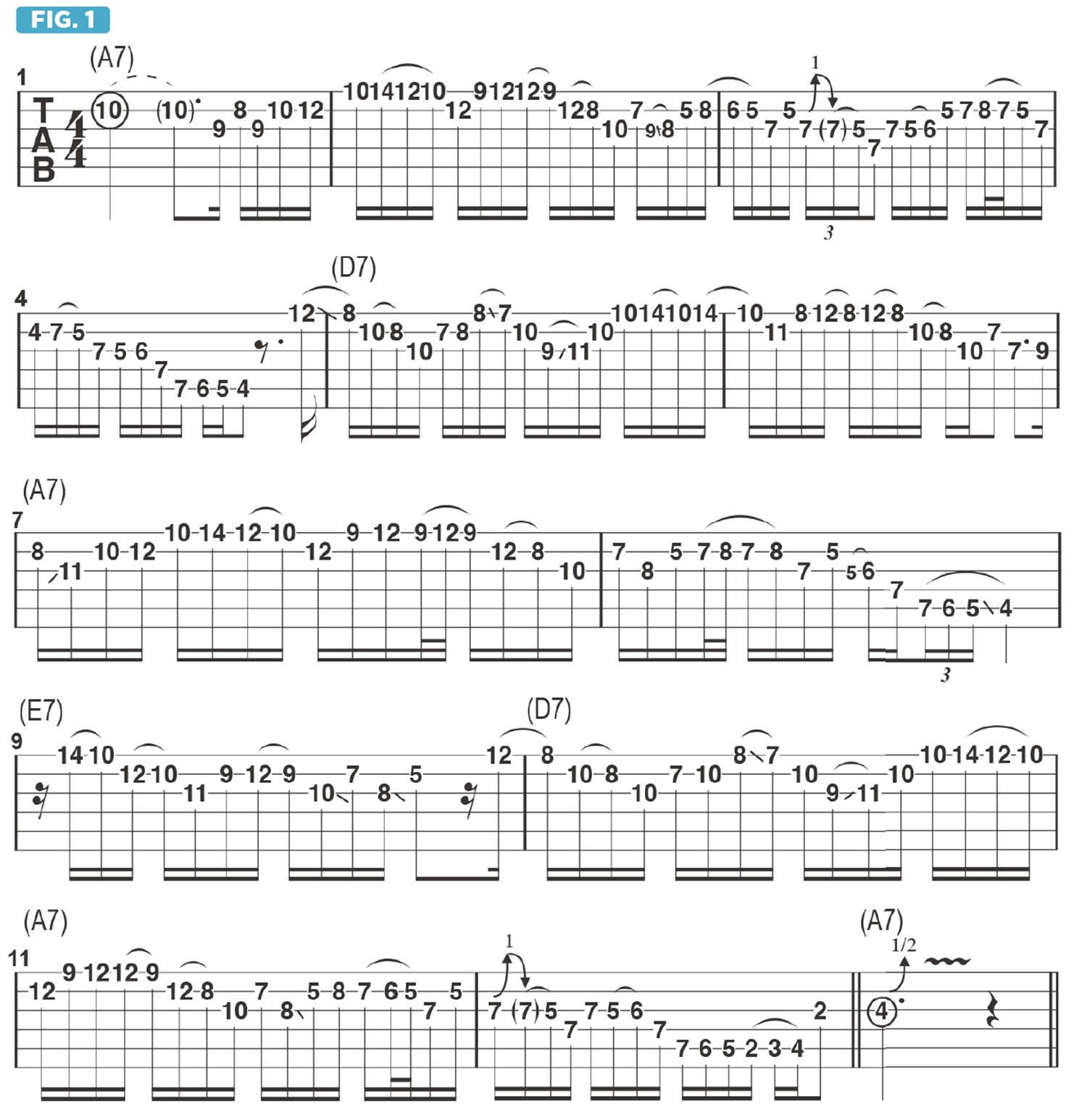
In my last column, we looked at some rhythm and lead approaches to playing over a 12-bar blues progression in the key of A that’s set to a brisk, country-style “train beat” with a swing-16ths feel.
Using this same template, I’d now like to offer some examples of ways to apply rootless dominant 9th chord arpeggios over the progression’s I, IV and V chords, A7, D7 and E7.
Figure 1 is an improvised solo played over the 12-bar form. Globally, one can think of the lines played over A7 as being based on the A Mixolydian mode (A, B, C#, D, E, F#, G), the lines over D7 as being based on D Mixolydian (D, E, F#, G, A, B, C) and those over E7 as based on E Mixolydian (E, F#, G#, A, B, C#, D).
But I’ll also use notes from the A minor pentatonic scale (A, C, D, E, G) and the A blues scale (A, C, D, Eb, E, G), as well as some chromatic passing tones, to spice things up.
I begin the solo with an A minor pentatonic approach but then reference A Mixolydian with the inclusion of the notes B and D and F#. In bar 2, I imply, or describe, an A9 chord sound (A, C#, E, G, B) with the notes G, B, C# and E. Notice that I don't play the A root note here, which is already implied in context.

Figure 2 shows a rootless A9 arpeggio played straight up and down. These four notes may also be thought of as a C#m7b5 arpeggio (C#, E, G, B).
At the end of bar 2, I use the chromatic notes F and Eb as I shift from 8th position down to 5th. The Eb at the beginning bar 4 serves to set up the melodic shape that follows, as I descend the A blues scale while also touching upon the chord’s major 3rd, C#.
When the progression moves to D7 in bar 5, I similarly describe a D9 sound (D, F#, A, C, E) by playing the notes C, E, A and F#. Figure 3 illustrates these notes in isolation. Notice that there’s no D root note included here and that the four notes may also be thought of as an F#m7b5 arpeggio (F#, A, C, E).

When moving back to A7 in bar 7 of Figure 1, I once again use elements of an A9 arpeggio, with similar chromaticism brought into play as the line evolves.
Bar 9 brings us to E7, and here I make use of the same form I had applied to the IV chord, but moved up two frets, or a whole step, to describe an E9 sound (E, G#, B, D, F#).

Figure 4 shows the notes of all three rootless dominant 9th arpeggios – E9, D9 and A9. It may seem complicated, but it’s actually pretty straightforward, as each chord is approached with the same tones – the 3rd, 5th, b7th and 9th – played in varying orders. Try incorporating these shapes into your own solos.







